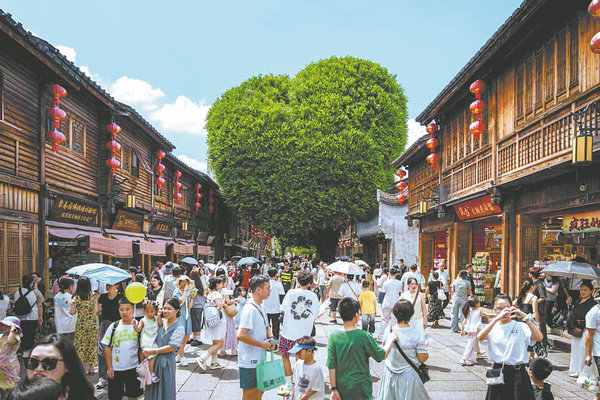

At a styling studio, I watch visitors transform with the "three-rod "hairstyle.
"It was originally a practical headdress for farming women who would use the rods for self-defense," a stylist explains while arranging a customer's hair. It has now evolved into a cultural symbol reinvented for modern aesthetics. Perhaps the most surprising discovery is the painted glass workshop housed in a 280-year-old courtyard.
Here, artists practice a Fujian provincial-level intangible cultural heritage — using syringes rather than brushes to inject mineral pigments into crystal glass.
"Artists might excel at painting, but this requires different skills entirely," the workshop's guide explains.
They've developed thousands of mineral pigments and created products ranging from partition screens that feature patterns of classic Chinese paintings to thangka paintings.
Those stunning polychromatic pieces were presented as diplomatic gifts, the guide proudly tells me.
While Sanfang Qixiang presents horizontal history, Yantai Hill, a 20-minute drive away, unfolds vertically and has been a magnet for young people seeking modern vibes.
The hill resembles a 40-meter-tall open-air museum of architectural fusion. From its origins as a Yuan Dynasty (1271-1368) fortress to becoming home to 17 foreign consulates after Fuzhou opened as a port in 1845, the hill boasts 163 buildings spanning Gothic, Romanesque and traditional folk styles.